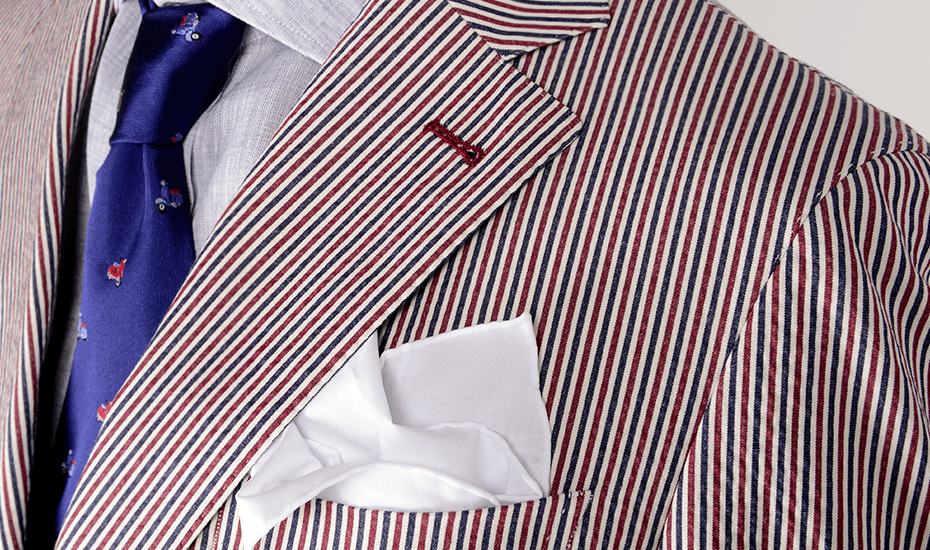If you feel like wearing seersucker clothing, it’s the right season and year to do this. Seersucker is indeed one of the most typical summer fabrics, a truly New York style classic, which has become popular again in Europe recently.
They use it to create trousers, shirts, jackets, shorts, and suits and it will be part of the next spring-summer men’s collection, coming in blue, white and light blue, but also in a range of other colors, often in a checkered or striped pattern.
This small guide to the Indian-origin fabric includes all you should know: how it is made, where it comes from, when to choose it and, most importantly, how. Learn more about this fascinating fabric!
What’s seersucker

Seersucker is a summer fabric made with a cotton fabric where tight-tension yarns alternate with loose-tension yarns: this special weaving process gives the fabric a puckered surface. This fabric was originally made with pure silk and cotton, so when you damped it the only cotton shrank, giving the fabric its crinkled appearance.
This wavy surface, combined with cotton lightweight, makes seersucker the ideal fabric for hotter weather. The loose weave allows a wider distance between the fabric and your body, helping create airflow.
Where does it come from
The East India Company brought it to Europe in the 18th century. It was not common to see men wearing seersucker garments in England, probably because of the English weather; the upper class used to wear them during its stay in Italy when it went on a safari in Kenya or on holiday in the North-American English colonies.

Apparently, people started using this particular fabric also on some official occasions, after Joseph Guerney Cannon, an American politician, met President Roosevelt in a seersucker suit in 1903. When he was asked why he would break the rules of formality, he answered: “It was a really hot day”.
What you should buy and when
Are you eager to combine comfort with lightness? Do it now, but remember seersucker is an informal fabric with a particular appearance. If you want to buy a seersucker garment, we suggest that you opt for a best-quality garment, preferably a tailored one. So you won’t look a sloppy dresser when you will decide to opt for the crimped-surface fabric.
How and when to choose it
A little exotic, elegant and casual at the same time: seersucker suits, blazers, and shirts are original garments, but quite easy to match. Here are some tips about wearing seersucker garments:

Since it is an informal fabric, you shouldn’t go to the office in a seersucker suit. Show it off for happy hours, informal dinners and cocktails, preferably in blue or brown, matched with a pair of shiny derby shoes.
If you have never put on a seersucker garment, you should start from one simple matching: combine a striped seersucker jacket with a white button-down shirt or t-shirt, blue navy trousers, and loafers. You can exceptionally wear canvas espadrilles! A classic look to wear in town or on an excursion.
Honestly, a seersucker shirt is not ideal on formal situations, so wear it on your casual fridays or at the weekend. Match it with a pair of contrasting tailored chinos, you won’t regret it!

Did you know that…
- In 1996, the former Senator Trent Lott, came up with the National Seersucker Day, which is best known as the Seersucker Thursday. The goal was to bring some charm and tradition of the South to Capitol Hill, to remember the way senators used to dress before air conditioning became popular and honour this American fashion icon.
- The term seersucker comes from the Persian words shir e shakkar, literally “milk” and “brown sugar”, and it probably refers to its two-coloured shades or to the alternatively smooth and puckered surface of its stripes.
Original Blog Post can be found at: https://www.lanieri.com/blog/en/seersucker-how-when-and-why-you-should-choose-it/


